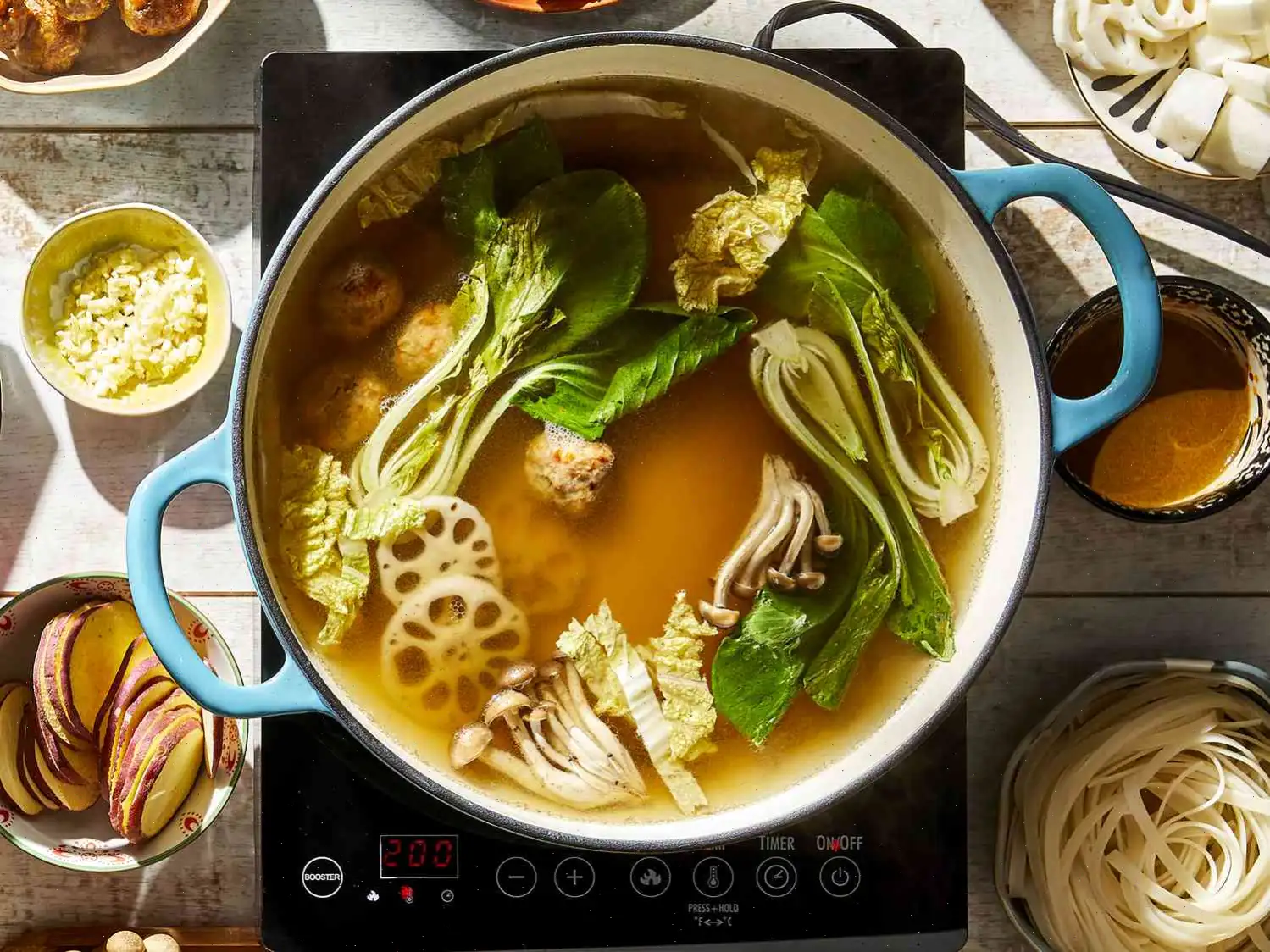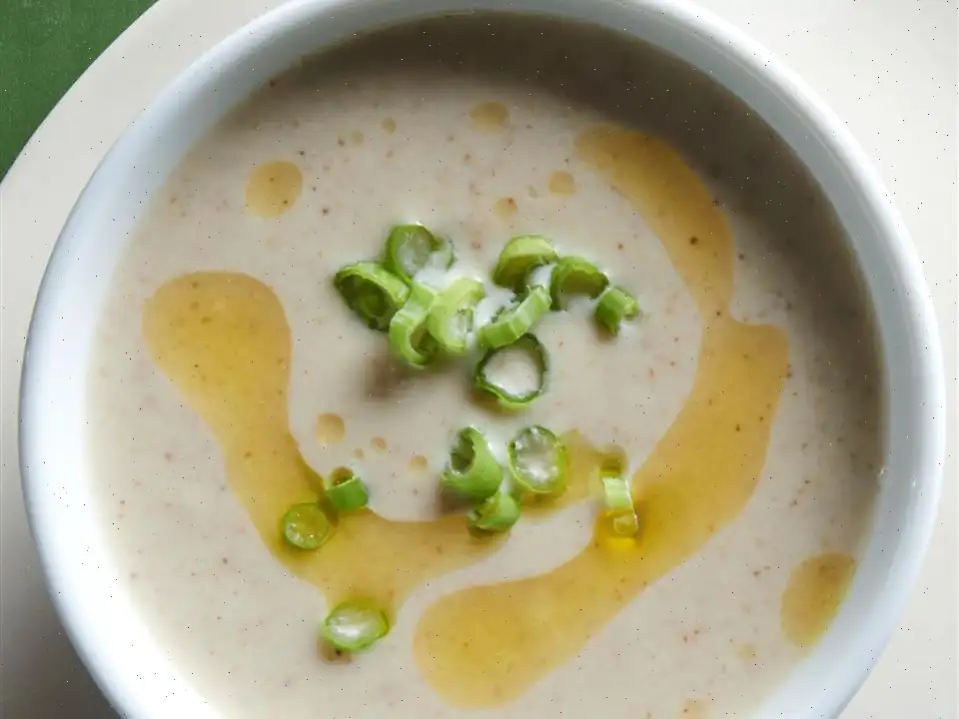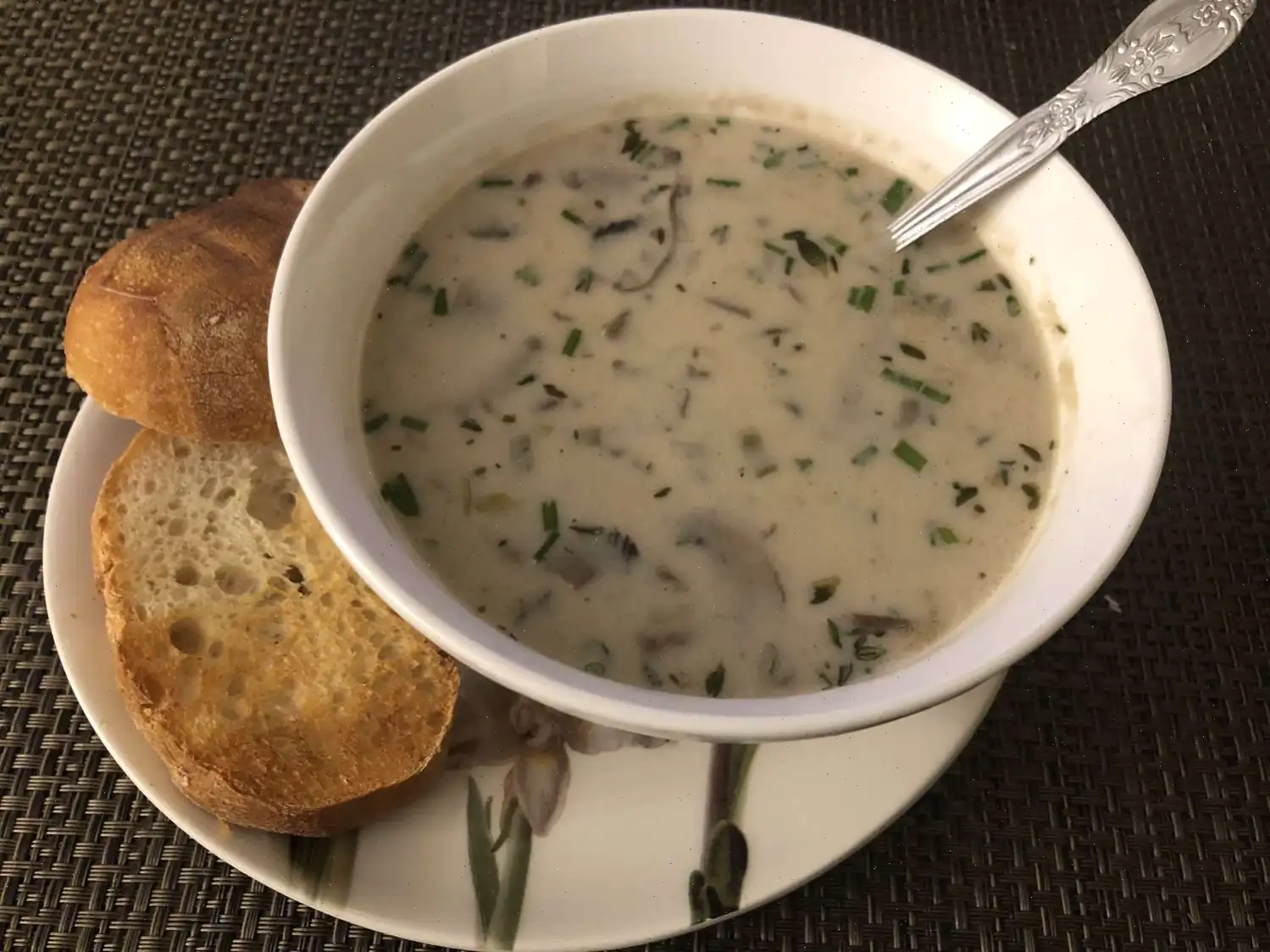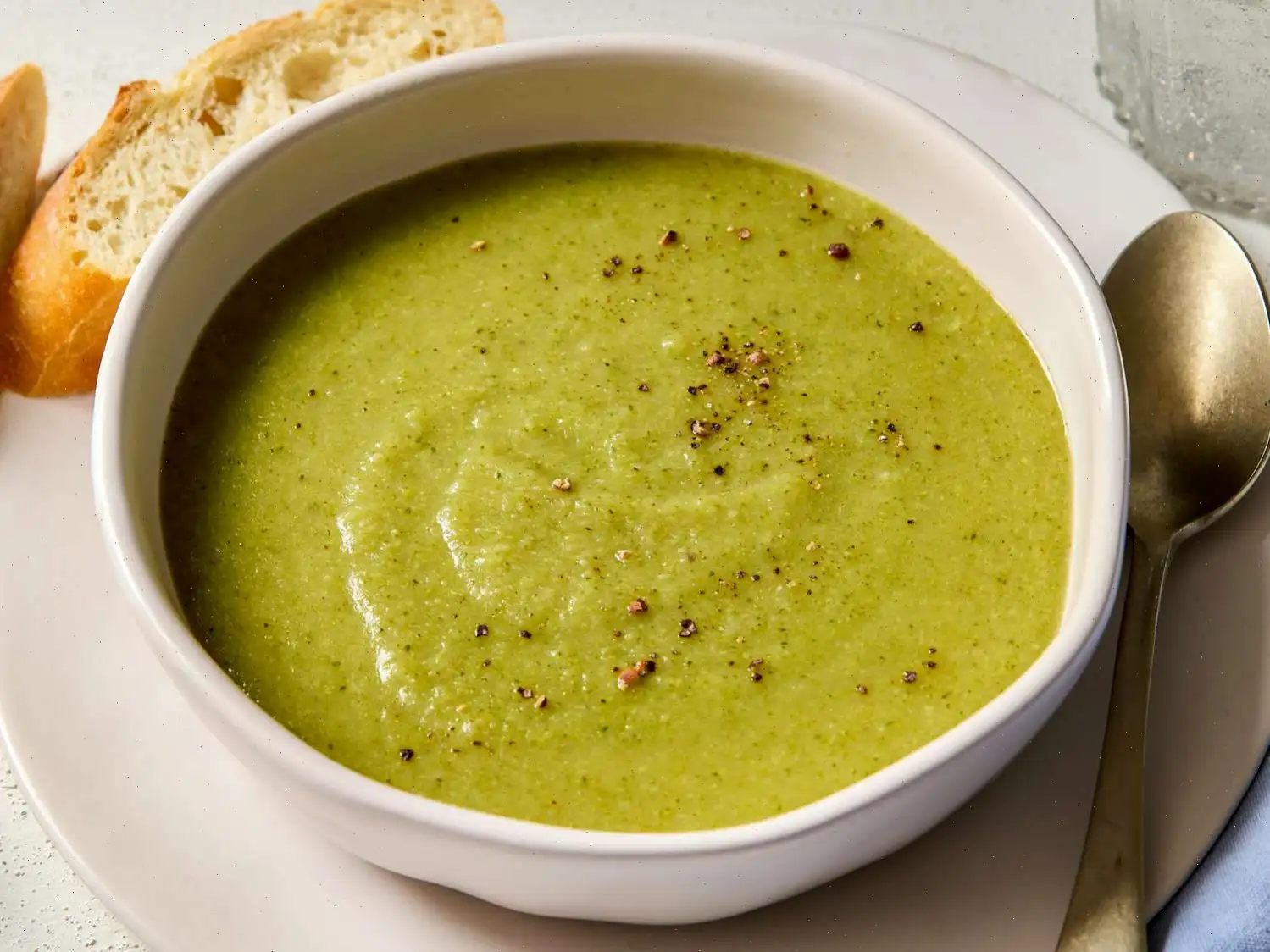
Chinese Hand-Pulled Noodles in Beef Broth Recipe
Ingredients
Original recipe (1X) yields 8 servings
Soup:
- 1 gallon water
- 2 pounds boneless beef shoulder, cubed
- cup sliced fresh ginger
- 2 tablespoons Szechuan peppercorns
- 2 dried tsaoko
- 2 pieces dried mandarin orange peel
- 4 bay leaves
- 2 tablespoons salt, or to taste
Noodles:
- 8 cups all-purpose flour or bread flour
- 2 cups water
- cup vegetable oil
Garnish:
- 1 pound daikon (white radish), peeled and sliced
- 3 stalks green garlic, chopped
- 1 bunch fresh cilantro, chopped
- 8 drops chili oil, or to taste (Optional)
Directions
Step 1: In a large pot, bring the water to a boil. Add the beef, ginger, Szechuan peppercorns, dried tsaoko, dried mandarin peels, and bay leaves. Bring the soup back to a boil, then reduce to a simmer. Cover and cook for 2 hours.
Step 2: After 2 hours, discard the whole spices from the broth. Season the beef broth with salt to taste. Cover the pot and keep warm.
Step 3: In a large bowl, combine the flour and gradually mix in the water. Stir until the dough begins to come together, then knead for 15 to 20 minutes until smooth.
Step 4: Cover the dough with plastic wrap and let it rest for 15 minutes. After resting, knead the dough for an additional 2 minutes, then cover and let it rest again for 15 minutes. Knead once more for 2 minutes.
Step 5: Divide the dough into 4 equal pieces. Roll each piece into a 3/8-inch thick sheet. Brush both sides of each sheet with vegetable oil, then stack the sheets together. Cover them with plastic wrap and let them rest for 10 to 15 minutes.
Step 6: In a large saucepan, bring water to a boil. Add the sliced daikon and cook for 10 to 15 minutes until tender. Remove with a slotted spoon and drain well. Set aside, but save the water to cook the noodles.
Step 7: Take one sheet of dough and place it on a cutting board. Slice it into 1/8-inch-wide strips. Hold one end of a strip in each hand, and stretch it to a length of 30 to 35 inches. Fold the strip into thirds and stretch again to the same length. Shake and slap the dough against the counter several times to stretch it further, to about 2 to 3 yards in length.
Step 8: Drop the stretched noodle strip into the boiling water. Add 2 to 3 more strips of noodles to the pot. Cook for 5 to 10 minutes, or until the noodles are tender.
Step 9: Once cooked, transfer the noodles to a serving bowl. Repeat this process with the remaining dough sheets.
Step 10: Pour the hot beef broth over the drained noodles. Top with the cooked beef, daikon slices, chopped green garlic, fresh cilantro, and chili oil (optional).
Nutrition Facts (per serving)
- Calories: 671
- Fat: 15g
- Carbohydrates: 101g
- Protein: 29g
- Sodium: 1816mg
- Cholesterol: 53mg
- Dietary Fiber: 5g
- Vitamin C: 19mg
- Iron: 9mg
- Calcium: 79mg
- Potassium: 485mg
Note: Percent Daily Values are based on a 2,000 calorie diet. Your daily values may be higher or lower depending on your calorie needs.

History of Chinese Hand-Pulled Noodles
Chinese hand-pulled noodles, or "la mian," have a long and rich history dating back to the Tang Dynasty (618907 AD). Originally, these noodles were made by skilled artisans who would stretch and pull dough by hand in a rhythmic motion. This tradition is believed to have originated in the northern regions of China, where wheat is a staple crop, and the dish became an integral part of regional cuisine. Over the centuries, it has evolved into various forms and remains a beloved dish in both rural and urban areas.
Regional Variations of Hand-Pulled Noodles
Although hand-pulled noodles can be found across China, they are most commonly associated with the regions of Lanzhou and Xi'an. Lanzhou, in particular, is famous for its beef noodle soup, a dish that showcases the technique of pulling noodles in front of customers. The broth is typically made with beef shank, and the noodles are served with spicy condiments like chili oil. In Xi'an, you may find similar noodle dishes that are influenced by the area's rich history as a Silk Road hub, incorporating a variety of spices and herbs.
Differences from Similar Dishes
Chinese hand-pulled noodles are often compared to other noodle dishes such as ramen or pho. What sets hand-pulled noodles apart is the unique preparation method, where the dough is stretched by hand rather than rolled or machine-cut. This gives the noodles a distinctive chewy texture and a slightly uneven shape, making them much more elastic and tender when cooked. In contrast, ramen noodles are usually made from egg and wheat flour and are often thinner, while pho noodles are flat and made from rice flour.
Where is it Typically Served?
Chinese hand-pulled noodles in beef broth are a popular street food and are commonly found in noodle shops throughout China. The dish is particularly popular in regions like Lanzhou and Xi'an, where it is often served as a comforting meal for breakfast, lunch, or dinner. It is also a staple at night markets and local eateries, offering an authentic taste of regional Chinese cuisine. Due to its hearty nature, the dish is enjoyed in both casual dining settings and festive gatherings.
Interesting Facts
- In Lanzhou, it is said that the act of pulling noodles is an art form, and the process is often done in front of customers who watch the chefs skillful movements.
- The word "la mian" literally translates to "pulled noodles" in Chinese, highlighting the importance of the technique in the dishs identity.
- Hand-pulled noodles are not just a food item but also a symbol of craftsmanship and pride in Chinese culinary culture.
- There are several festivals in China dedicated to celebrating hand-pulled noodles, where chefs showcase their talents by pulling massive amounts of dough in record time.
FAQ about Chinese Hand-Pulled Noodles in Beef Broth Recipe
Comments
Adam Green
11/05/2024 11:52:56 PM
This soup is absolutely delicious! We prepared it on a snowy day and it was definitely worth it. I will definitely be making it again!








